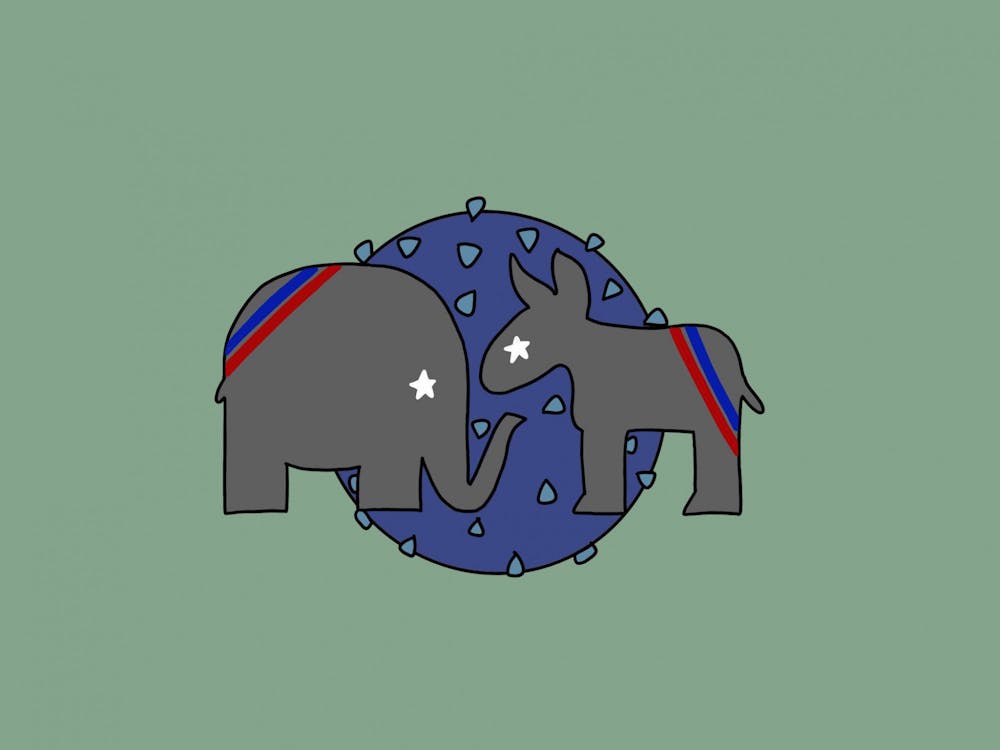If you look at a graphic that maps the geographic distribution of COVID-19 cases in the U.S. you will immediately see that the burden of the pandemic differs across state lines. A team of researchers from Hopkins and the Medical University of South Carolina recently investigated these interstate discrepancies and published their findings in the American Journal of Preventive Medicine.
The team includes Hopkins researchers Sara Benjamin-Neelon and Noel T. Mueller, who are both professors at the Bloomberg School of Public Health. They explored the relationship between the political affiliation of a state’s governor and the severity of COVID-19 cases in that state.
“One thing we learned from 2020 is that citizens take cues from leaders. So, for example, if the president chooses not to wear a mask, that conveys a message. That said, governors and other state leaders play a crucial role in preventing the spread of the virus within a state,” Benjamin-Neelon wrote in an email to The News-Letter.
For the majority of the pandemic, the federal government neglected to issue clear guidelines for a nationwide response. State governors, mostly left to their own devices, implemented a variety of different policies to curb the number of COVID-19 cases in their constituencies. Sara Benjamin-Neelon described how she and her colleagues were intrigued by the differing responses to the pandemic and sought to quantify its impacts.
“We, along with most of the country, noted a lack of federal response to the COVID-19 pandemic. As a result, and in the absence of federal guidance from leaders, we noticed major differences in how states were addressing the pandemic and decided to investigate,” she wrote.
Mueller offered the example of policy decisions made by Brian Kemp, the Republican governor of Georgia. On April 28, Kemp was the first governor to lift stay-at-home orders, a decision which Mueller says may have contributed to the subsequent increase in COVID-19 cases and deaths in Georgia in May and June.
“In general, Republican governors on average were slower to adopt both stay-at-home orders and mandates to wear face masks, and Democratic governors were more likely to issue stay-at-home orders with longer durations,” he wrote in an email to The News-Letter.
The team’s initial, informal observations were supported by their longitudinal analysis of COVID-19 incidence, death, testing and test positivity rates from March 15 to Dec. 15, 2020. The team adjusted their model for factors such as each state’s socioeconomic makeup and the percentage of the population in the state that voted for each candidate.
They found that from March 2020 to June 2020, Republican-led states had lower COVID-19 incidence rates than Democrat-led states. But that trend flipped in June 2020, when Republican-led states had higher incidence rates. The researchers also saw this trend in regard to death rates. After July 4, 2020, Republican-led states had higher death rates than Democrat-led states.
“The findings from our study, that gubernatorial affiliation was associated with differences in COVID-19 cases and deaths, is not entirely surprising,” Mueller wrote.
Benjamin-Neelon noted that governors’ policies and actions affect the likelihood that their constituents will adhere to guidelines set by public health professionals. If the governor of a particular state places looser restrictions, then those who live in the state may downplay the pandemic.
“In general, the public seems more willing to adhere to guidelines put forth by state leaders if the underlying rationale is clearly communicated and is modeled by leaders,” Benjamin-Neelon wrote.
Both researchers wish to see if the 2020 trends continued into 2021. They also want to explore gubernatorial influence on vaccine rollout. Benjamin-Neelon and Mueller were involved in another study that concluded that the impact of COVID-19 on a community is affected by the social vulnerability of that community. Social vulnerability is a measure of a community’s or individual’s susceptibility to the stressors to which they are exposed. The team plans to continue this research and explore other factors that affect numbers of COVID-19 cases and deaths.
“Moreover, in a separate project, we recently published on how social vulnerability of the population affected cases and deaths due to COVID-19, and we hope to examine other potentially deterministic factors of COVID-19 cases and deaths in the future,” Mueller wrote.
Both Benjamin-Neelon and Mueller were disappointed with the way that response to the pandemic was handled this past year.
“As a public health professional, I could not have imagined the political polarization we saw in the COVID-19 pandemic last year,” Benjamin-Neelon added. “The response by many elected officials at both the state and federal level was appalling — I was continuously shocked and disappointed by the lack of respect for public health recommendations and research.”
In their paper, the team noted that policy should be guided by public health guidelines, which in some instances were overshadowed by political machinations.
“Our recommendation going forward is to simply let policy be guided by scientific and public health considerations rather than political expedience,” Mueller wrote.





